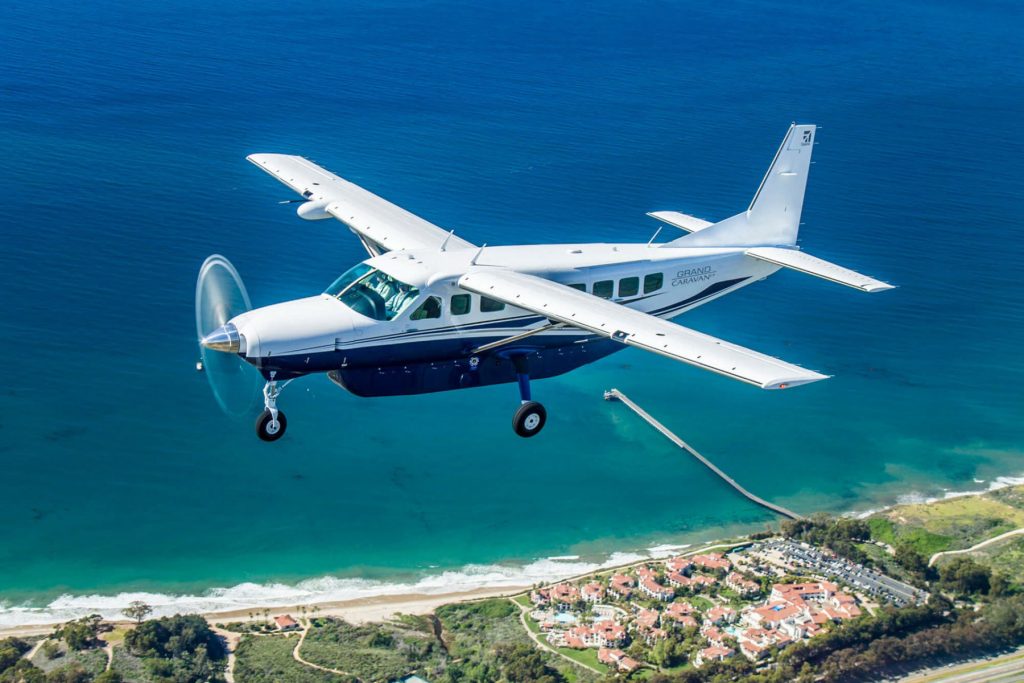When it comes to versatile, rugged, and dependable aircraft, the Grand Caravan stands out as a true champion. Whether it’s transporting cargo, flying in remote locations, or carrying passengers to their destinations, the Grand Caravan has proven itself as a reliable workhorse in the aviation world. In this blog, we’ll take a deep dive into the Grand Caravan, exploring its history, design, performance, cabin comfort, range, technological innovations, and what makes it stand out in the world of aviation.
History and Development
The Grand Caravan, developed by Cessna (now part of Textron Aviation), has a rich history dating back to the mid-1980s. It evolved from the Cessna 208 Caravan, which was introduced in 1982. The Grand Caravan was introduced in 1990 as an extended version of the Caravan, offering increased payload and cabin space. Over the years, the aircraft has undergone several updates and improvements, solidifying its reputation as a versatile workhorse.
Design and Performance
The Grand Caravan’s design is a testament to its utility. It features a high-wing configuration, which allows for excellent visibility, making it ideal for various missions, including surveillance, cargo transport, and passenger flights. Its spacious cabin can accommodate up to 14 passengers, and the aircraft boasts a large cargo door for easy loading and unloading of freight.
Powered by a Pratt & Whitney PT6A turboprop engine, the Grand Caravan has impressive performance capabilities. Its rugged landing gear and robust construction enable it to operate from unprepared airstrips, gravel runways, and even water with the amphibious version. With a maximum cruise speed of around 186 knots (216 mph), it can cover long distances efficiently.
Cabin Comfort
The Grand Caravan’s cabin offers a comfortable and flexible environment for passengers and crew. High ceilings and large windows create an open and airy feel. Passengers can enjoy comfortable seating and spacious legroom. The aircraft can be configured for various purposes, including executive transport, commuter flights, or medical evacuation, making it a versatile choice for operators.
Range and Performance
One of the Grand Caravan’s standout features is its impressive range and performance. With a maximum range of over 900 nautical miles, it can connect remote destinations that might be inaccessible to larger aircraft. Its exceptional short takeoff and landing (STOL) capabilities mean it can access airports with shorter runways, further expanding its operational flexibility.
Technological Innovations
The Grand Caravan has not been left behind in the world of technological advancements. Modern variants of the aircraft come equipped with state-of-the-art avionics, navigation systems, and safety features. This includes advanced weather radar, terrain awareness systems, and glass cockpit displays, enhancing both safety and situational awareness for pilots.
Why Grand Caravan Stands Out
The Grand Caravan stands out for its adaptability and dependability. Its versatility allows it to excel in numerous roles, from humanitarian missions to cargo transport to regional passenger service. Its rugged design and impressive performance make it a reliable choice for operators worldwide, especially in challenging environments.
Conclusion
In the world of aviation, the Grand Caravan has earned its reputation as a versatile, dependable, and technologically advanced aircraft. With a history dating back to the 1980s, it has evolved to meet the diverse needs of operators across the globe. Its design, performance, cabin comfort, and technological innovations make it a standout choice in its class.

